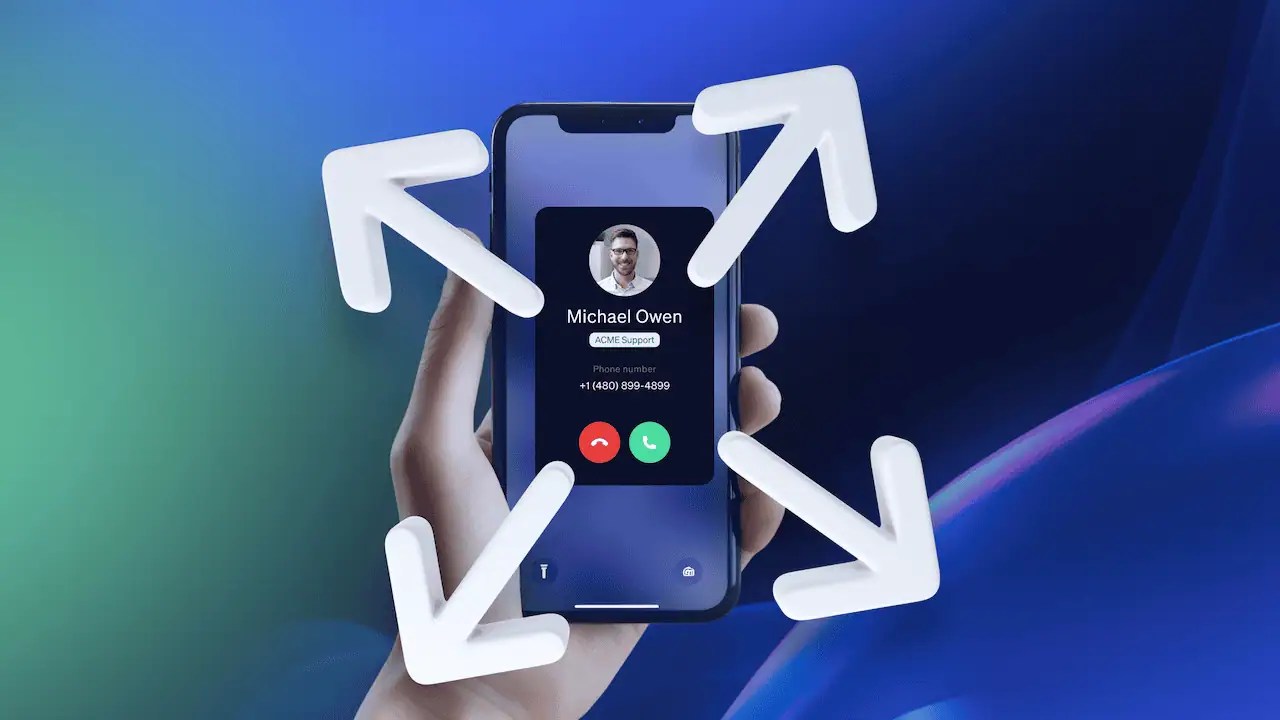Customer preferences for communication are always evolving. In fact, our State of Customer Experience Report reveals that 53% of business leaders tailor communication channels by generation or demographic to optimize their CX strategies. That’s why marketing communication tools are so essential.
Businesses are adopting an integrated marketing communication (IMC) approach, blending tools like social media, advertising, digital marketing, and traditional methods to deliver cohesive and impactful messaging.
In this article, we’ve curated a list of 23 marketing communication tools designed to help you connect with your audience through personalized brand messaging, build stronger relationships, and boost customer loyalty across various channels.
What Are Marketing Communication Tools?
Marketing communication tools refer to the different methods and technologies that businesses use for communicating their messaging to target audiences in order to build brand awareness and drive sales. These tools, such as paid ads, content marketing, and SEO, are often used in combination to help businesses reach their customers and potential customers.
What makes an effective MarCom tool?
An effective marketing communication (MarCom) tool aligns with your marketing strategy, goals, and objectives. It helps you communicate with your target audience, supports your business objectives, and adapts to your needs over time — all while being easy to use and offering measurable outcomes.
Here are the key elements that make MarCom marketing tools effective:
- Integrates seamlessly with your existing systems, such as CRM software, email marketing platforms, social media management tools, and workflows to streamline processes.
- Scales at the speed of your business growth to allow you to handle larger audiences, more data, or more complex campaigns.
- Meets your needs and wants with features that directly address your marketing challenges.
- Provides actionable insights with advanced data and analytics so you can track and measure performance, assess ROI, optimize strategies, and make data-driven decisions.
- Enables targeted reach so you can effectively connect with your specific audience with the right message.
- Provides an easy-to-use, intuitive interface, allowing your team to easily implement and manage campaigns without a steep learning curve.
- Adapts quickly and easily as new trends, technologies, and customer behaviors evolve.
Now, let’s talk about the different types of marketing communication tools.
23 Marketing Communication Tools Your Business Needs
To effectively reach your target audience, your business needs to leverage the right tools and messaging on the platforms where your customers and leads already are. Below are twenty-three essential marketing tools that can help you achieve this. Keep in mind that you don’t have to jump on all twenty-three; instead, start with five or ten of the most appropriate ones and measure the results.
1. Social media marketing
Social media platforms are indispensable for connecting with your target audience, sharing relevant content, and building brand awareness. Consistent customer engagement, conversation participation, and targeted advertising on these platforms can boost website traffic, generate leads, and foster brand loyalty. Social media’s broad reach and interactive nature allow businesses to engage directly with customers and gather valuable insights.
| Pro tip: Maximize your social media reach by using a social CRM to streamline the process of creating engaging content across platforms like Facebook, Instagram, and X (formerly Twitter). Share relevant posts, use targeted hashtags, and collaborate with influencers to expand your audience and drive engagement. |
2. Influencer marketing
Influencer marketing leverages influencers’ trust and credibility with their followers to promote your brand. You can effectively reach a broader, engaged audience by carefully selecting influencers who resonate with your target market and align with your brand values.
This marketing communication strategy can enhance brand credibility, drive conversions through authentic endorsements, and encourage customers to engage with your brand. The key challenges include identifying the right influencers, managing partnerships, and accurately measuring ROI.
| Pro tip: Partner with influencers on platforms like Instagram, TikTok, and YouTube to reach a highly engaged audience. Choose influencers whose followers align with your target market and collaborate on sponsored content or product reviews to build credibility and drive sales. |
3. Video marketing
Video content is a dynamic way to capture attention and communicate your brand message visually. Platforms like YouTube, TikTok, and Instagram Reels offer versatile spaces to showcase your content through social media marketing. For example, YouTube is ideal for creating in-depth product demonstrations, tutorials, or behind-the-scenes videos that provide detailed insights into your offerings.
TikTok’s short-form format allows for quick, engaging snippets that highlight your products or services in a creative and entertaining way. Instagram Reels also capitalize on the short-form video trend, enabling you to reach and engage a wider audience through discoverable and shareable content. While videos effectively convert viewers into customers, the production process can be time-consuming and costly, making quality and consistency key to success.
4. Text marketing
Text messaging marketing offers a direct, personalized way to reach customers with offers, updates, and reminders. By building a robust opt-in list, businesses can send targeted messages that drive immediate action, such as promoting sales or sharing exclusive discounts.

Some types of text marketing include:
- SMS marketing: Send text message campaigns to promote sales, offer discounts, or provide updates.
- MMS marketing: Send multimedia messages with images or videos.
- SMS chatbots: Use automated text message conversations to provide customer support or answer questions.
Text marketing’s immediacy and directness make it an effective tool for customer engagement, though challenges like message length limitations and the risk of being perceived as spam must be carefully managed.
5. Live chat marketing
Implementing live chat on your website allows for instant communication, enabling customers to get immediate answers and personalized assistance. This real-time interaction enhances customer satisfaction, helps address concerns, and generates leads efficiently. While live chat can significantly improve the customer experience, ensuring consistent quality and adequately staffing the service can be challenging.
| Nextiva’s live chat software offers a seamless integration solution for businesses to engage with customers across various messaging apps. Powered by AI, this tool automates customer interactions, reducing the need for manual intervention and fostering stronger relationships. |

6. Email marketing
Email marketing remains a cornerstone strategy for nurturing leads and building lasting relationships. Through well-crafted and targeted automated emails, businesses can stay at the top of their audience’s mind, driving conversions and repeat purchases. Despite the challenges of high unsubscribe rates and spam filters, email marketing offers the advantage of measurable ROI and the ability to deliver personalized content directly to subscribers.

7. Advertising
Advertising is a versatile tool for reaching a wide audience and driving brand awareness across various channels. Effective multichannel marketing can significantly boost lead generation and sales, whether through traditional marketing like billboards, TV, and print media or digital platforms like search engines and social media.

A few popular examples of advertising platforms include:
- Google Ads: Create search engine ads, display ads, and video ads.
- Facebook Ads: Target specific audiences on Facebook, Instagram, and Messenger.
- LinkedIn Ads: Reach professionals on LinkedIn with sponsored content and targeted ads.
The challenges lie in balancing cost with targeting accuracy and measuring the return on investment, but when executed well, advertising can be a powerful driver of business success.
8. Sales promotions
Sales promotions are a proven tactic for driving short-term sales and encouraging customer action by creating a sense of urgency. Offering limited-time incentives, like discounts, coupons, or giveaways, is a great promotional tool that attracts new customers and prompts repeat purchases. However, overusing promotions may devalue the brand, and the approach might not be sustainable in the long term.
9. Direct marketing
Direct marketing allows for personalized communication with specific target audiences through direct mail, catalogs, or brochures. By tailoring your message to the interests and demographics of your audience, you can increase the effectiveness of your campaigns and encourage a strong response. Despite the decline in response rates and environmental concerns, direct marketing remains a valuable marketing communication tool for businesses seeking to engage specific segments.
10. Newsletters
Newsletters are an effective way to keep your audience engaged and informed. By sharing company updates, industry news, and valuable content, you can build trust, position your brand as an authority, and drive traffic to your website. Newsletters come in several forms, including:
- Email newsletters: Send regular email updates with company news, new product information, or industry insights.
- Print newsletters: Create printed newsletters to distribute to customers or partners.
- Digital newsletters: Create interactive newsletters with multimedia elements.
Consistently create engaging content and manage your email list to avoid issues like spam filters and declining open rates.

11. Trade shows
Participating in trade shows provides a unique opportunity to network with potential customers, partners, and industry influencers. This allows you to showcase new products or services and improved functionalities. Engaging in industry events can generate new business opportunities and broaden your market reach. However, the costs and logistics involved and competition from other exhibitors can pose significant challenges.
12. Webinars and seminars
Webinars and seminars are excellent platforms for sharing expertise, educating your audience, and generating leads. Hosting sessions on industry-relevant topics allows you to establish your brand as a thought leader while building relationships with potential customers. However, challenges such as scheduling conflicts, technical difficulties, and low attendance rates can affect the success of these events.
| Nextiva Webinars is a great example of a business that regularly provides exclusive, informative, and valuable webinars. These webinars allow business professionals to register and participate in live events from anywhere in the world. |
13. Community forums
Active participation in online community forums relevant to your industry can help you build relationships, showcase your expertise, and attract potential customers. You can increase your brand’s visibility and credibility by answering questions and sharing insights.
While this marketing communication strategy can be time-consuming, and managing conversations can be complex, the long-term benefits of conversational commerce and community engagement are substantial.
14. Customer surveys
Customer surveys are a direct method of gathering feedback to improve your products, services, and overall customer experience. By asking targeted questions about satisfaction and preferences, you can identify areas for improvement and build stronger customer loyalty. Challenges include achieving a high response rate, avoiding response bias, and effectively analyzing the data to implement changes.

15. SEO tools
SEO tools are crucial for optimizing your website’s presence on search engine results pages, driving organic traffic, and enhancing brand visibility. These online marketing tools help improve search rankings and attract more qualified leads through keyword research, performance analysis, and on-page optimization.
To maximize the benefits of SEO tools, it’s essential to continuously conduct market research, keep up with algorithm changes, and make strategic adjustments to stay ahead of the competition.
16. Customer relationship management software
CRM software is essential for managing customer interactions, sales pipelines, and data. By organizing information and automating tasks, CRM systems enhance customer satisfaction and sales efficiency, leading to stronger relationships. The challenges include the cost of implementation, the complexity of integration, and ensuring data security, but the benefits of streamlined customer management are invaluable.

17. Content management systems
A content management system (CMS) simplifies creating, managing, and publishing website content. By using a CMS, businesses can ensure consistency across their website, streamline content updates, and improve overall website efficiency. While the learning curve and potential technical difficulties present challenges, easily managing and updating content is a significant advantage for any organization.
18. Marketing automation platforms
Marketing automation platforms are powerful tools for streamlining repetitive marketing tasks like email campaigns and social media posting. By automating these activities, businesses can save time, improve efficiency, and focus on strategic initiatives that drive better results. However, the cost, complexity, and need for seamless integration with other systems can be significant challenges.
| Nextiva’s marketing automation tools streamline social media management by allowing you to schedule and publish content from a central dashboard. Additionally, the platform enables you to engage with customers on social media, fostering loyalty and building stronger relationships. |
19. Mobile apps
Developing a mobile app allows customers to interact with your brand on the go, providing a seamless and convenient experience. Mobile apps can increase customer engagement and brand loyalty by offering valuable features and an intuitive user interface. However, the development can be costly, and maintaining the app with updates and bug fixes is crucial for long-term success.

Related: 13 Innovative Mobile Marketing Examples and Why They Worked
20. Review marketing
Positive customer reviews are vital for building trust and credibility, as they significantly impact potential customers’ purchasing decisions. Managing your reviews on platforms like Google My Business, Yelp, and Trustpilot is essential for encouraging satisfied customers to share their experiences. By actively monitoring and responding to reviews on these platforms, you can manage your brand’s reputation and address customer concerns in real time. While handling negative reviews and ensuring feedback authenticity may be challenging, the benefits of a positive brand reputation and customer trust make these marketing efforts worthwhile.
| Pro tip: Investing in AI-powered reputation management software allows you to easily monitor and respond to customers instantly, all from a single view. |
21. Public relations
Though many people may use marketing and PR interchangeably, they are quite different. Public relations is all about managing your brand’s image and building positive awareness through strategic media engagement. An effective PR campaign involves crafting compelling press releases and fostering relationships with journalists, allowing businesses to generate positive media coverage and enhance their reputation.
Some challenges include handling media relations, managing social media crises, and measuring the impact of PR efforts.
22. Content marketing
Content marketing focuses on creating and sharing valuable content to attract and engage your target audience. High-quality content creation that addresses your audience’s needs positions your brand as an authority, driving leads and website traffic. While creating content regularly and promoting it effectively are challenges, the long-term benefits of content marketing include increased brand loyalty, customer retention, and sustained audience engagement.
| Pro tip: Enhance your content marketing strategy by creating informative blog posts, visually appealing infographics, and compelling case studies. This combination will engage your audience, establish your expertise, and demonstrate the value of your offerings. |
23. Sponsorships
Sponsorships provide an opportunity to increase brand visibility by aligning with events, organizations, or causes that resonate with your target audience. Supporting these initiatives enhances your online reputation, builds relationships with key stakeholders, and demonstrates a commitment to the community. The primary challenges include ensuring the sponsorship aligns with your brand values, managing costs, and measuring the return on investment.
Related: Best Collaboration Tools for Improving Team Communication
Multiply Your Marketing Team’s Impact with Nextiva
With the right marketing communication tools, you can deliver your brand’s message clearly, loudly, and transparently to your target audience. These tools of marketing help build and reinforce your brand and streamline your digital marketing campaigns, leading to improved sales and a stronger brand image.
With Nextiva’s AI-powered outbound campaign solution, you will enhance operational efficiency through smart dialing, dynamic scripting, and task automation. This allows your team to focus on what truly matters—building relationships and delivering personalized experiences—ultimately boosting customer engagement and compliance.
Smart campaign management.
Nextiva Contact Center’s AI-powered outbound campaigns boost efficiency. Smart dialing, dynamic scripting, and task automation for superior engagement.

















 Marketing & Sales
Marketing & Sales 








